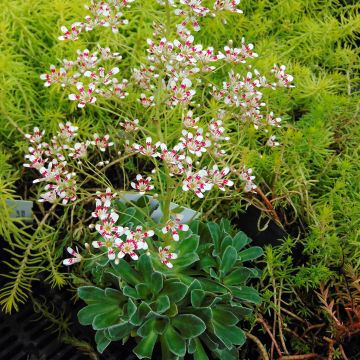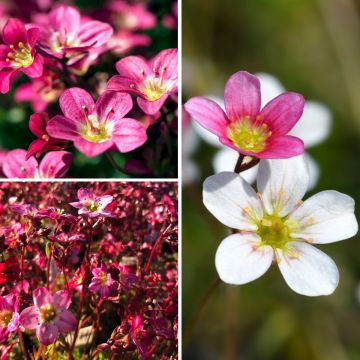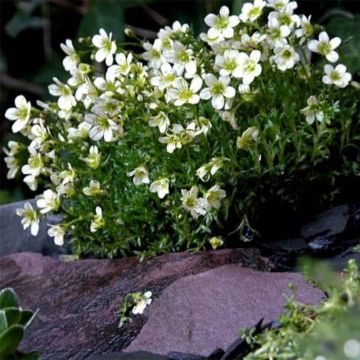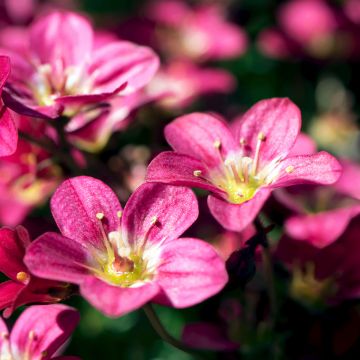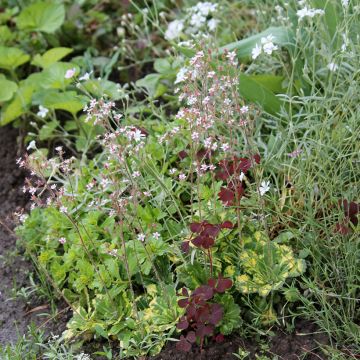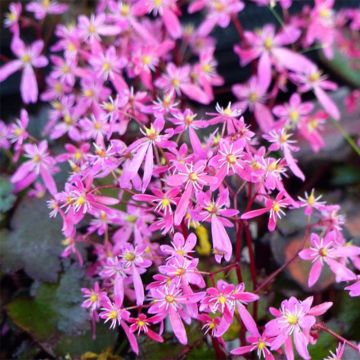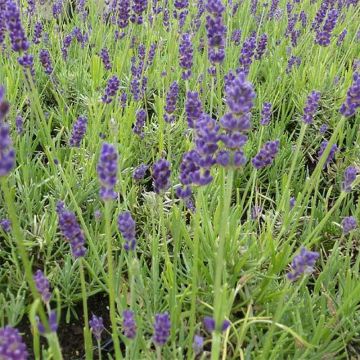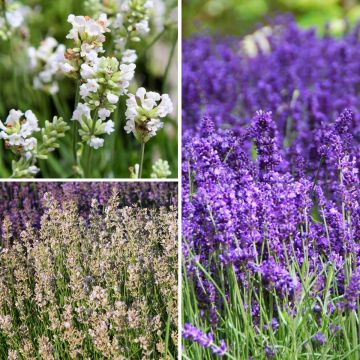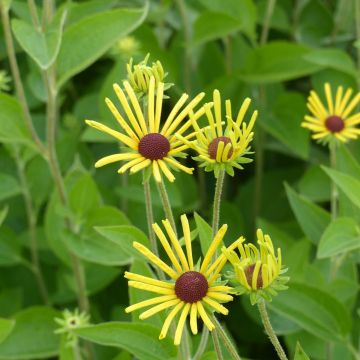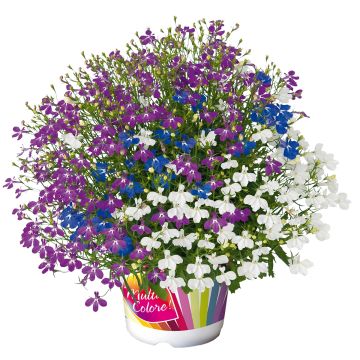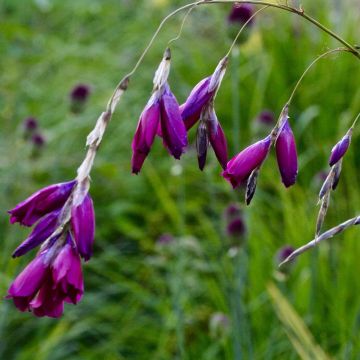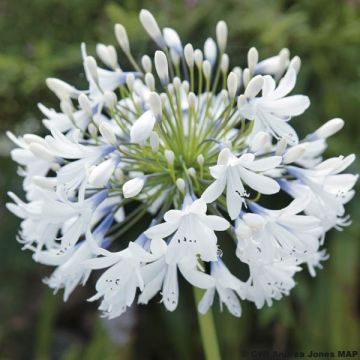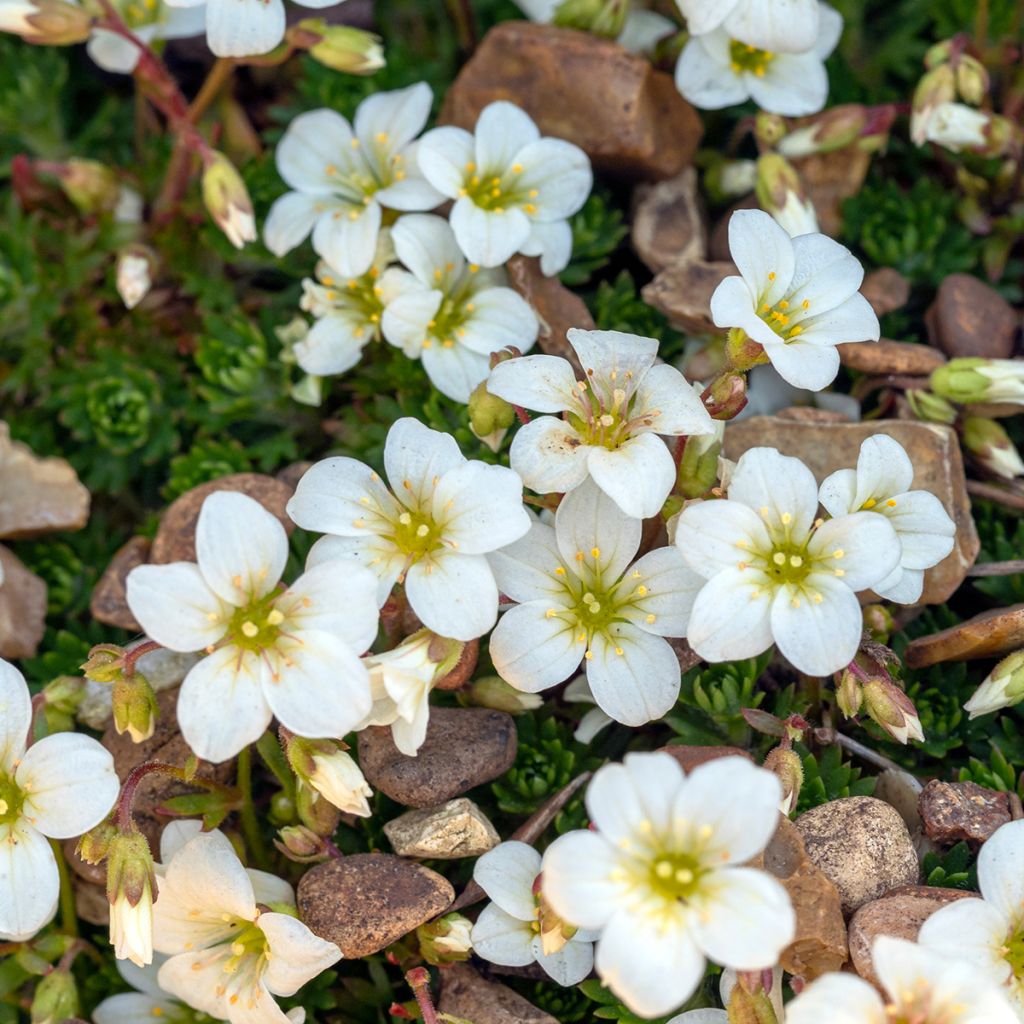

Saxifraga paniculata var. minutifolia Minutifolia
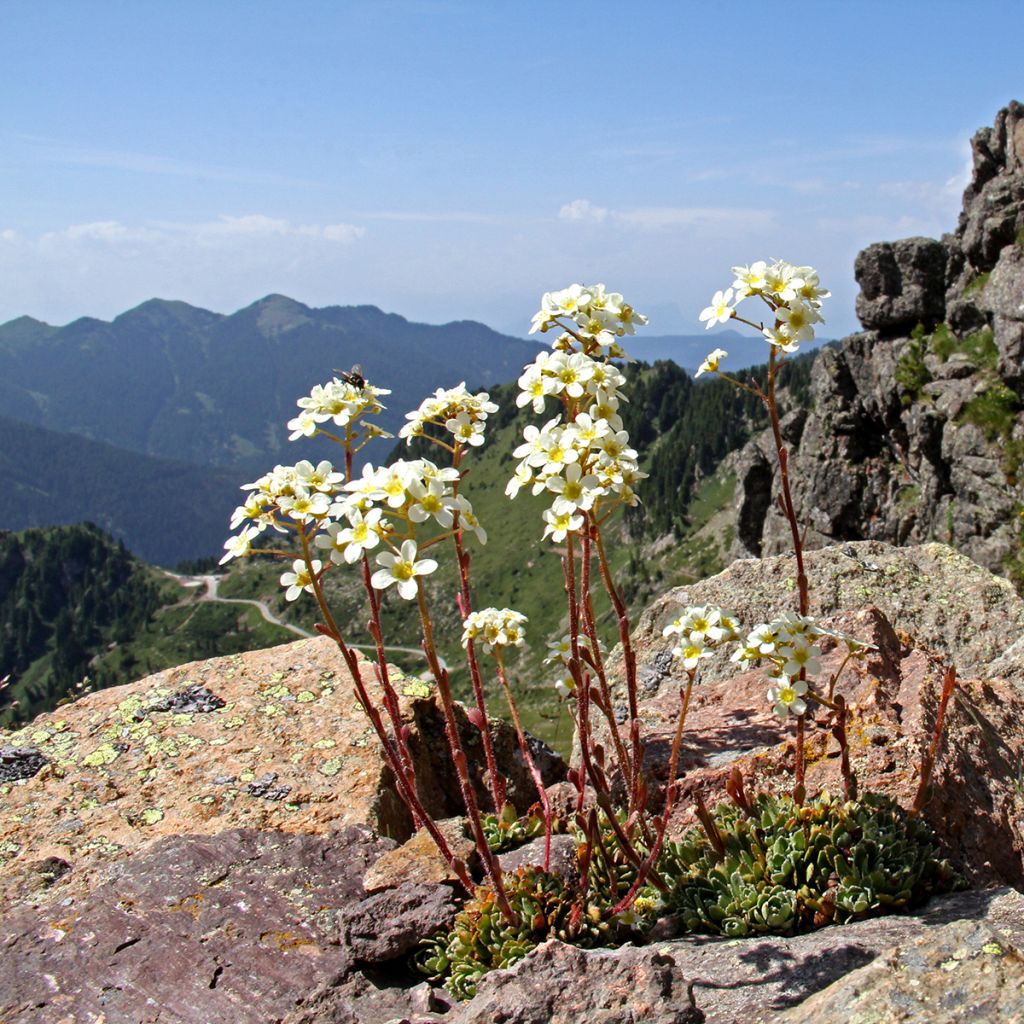

Saxifraga paniculata var. minutifolia Minutifolia
Saxifraga paniculata var. minutifolia Minutifolia
Saxifraga paniculata var. minutifolia Minutifolia
Lifelong Saxifrage, Encrusted Saxifrage
This item cannot be shipped to the selected country
Delivery charge from €5.90
More information
Schedule delivery date,
and select date in basket
This plant carries a 12 months recovery warranty
More information
We guarantee the quality of our plants for a full growing cycle, and will replace at our expense any plant that fails to recover under normal climatic and planting conditions.
From €5.90 for pickup delivery and €6.90 for home delivery
Express home delivery from €8.90.
Does this plant fit my garden?
Set up your Plantfit profile →
Description
The Saxifraga paniculata var. minutifolia is a charming small form of paniculate saxifrage or encrusted saxifrage. This perennial forms a very dense mat of evergreen foliage, beautifully toothed, arranged in tiny rosettes. This green to silvery gray foliage, sometimes tinged with purple-brown, is encrusted with limestone, giving it a white border. In late spring, short, red-tinged flower stalks bear creamy white flowers. It is an alpine saxifrage that thrives in slightly moist and sunny limestone rockeries.
The Saxifraga paniculata belongs to the Saxifragaceae family. This species is found in Norway, Iceland, Greenland, central and southern Europe, the Caucasus, and Canada. The Saxifraga paniculata var. minutifolia forms small, dense rosettes of oblong or elongated, tough, and toothed leaves. They are green-gray in color, with limestone encrustations along their edges, creating a silvery border. The flowering plant reaches about 10 to 15 cm in height with a spread of 30 cm. The low flower stalk bears creamy white flowers in a branching panicle, measuring 3 cm, between May and June.
The Saxifraga paniculata var. minutifolia thrives in rockeries or in well-drained and slightly moist, limestone soils, avoiding acidic soils. It is a hardy plant. It can be grown in a pot if provided with the right conditions. It forms a dense mat that gradually spreads. It can be combined with other alpine perennials such as Androsace, Alpine Pink (Dianthus alpinus), or small gentians. Between paving stones or on walls, it can be accompanied by all these small interstitial perennials: thymes, wall bellflowers, Campanula chamissonii 'Major', or Phyteuma scheuchzeri or Scheuchzer's Rampion.
Report an error about the product description
Saxifraga paniculata var. minutifolia Minutifolia in pictures


Flowering
Foliage
Plant habit
Botanical data
Saxifraga
paniculata var. minutifolia
Minutifolia
Saxifragaceae
Lifelong Saxifrage, Encrusted Saxifrage
Cultivar or hybrid
Other Saxifraga
Planting and care
Saxifraga paniculata var.minutifolia is grown in a neutral to limestone soil, but definitely not acidic. It needs to be well-drained, light, and not too dry or too wet. It appreciates the sun. It does not tolerate excessive moisture in winter. It requires very little maintenance, and faded flowers can be removed after flowering for a cleaner look. It is best to plant this small perennial in March.
It is sensitive to attacks from aphids, gastropods, weevils, and red spiders.
Planting period
Intended location
Care
This item has not been reviewed yet - be the first to leave a review about it.
Summer flowering perennials
Haven't found what you were looking for?
Hardiness is the lowest winter temperature a plant can endure without suffering serious damage or even dying. However, hardiness is affected by location (a sheltered area, such as a patio), protection (winter cover) and soil type (hardiness is improved by well-drained soil).

Photo Sharing Terms & Conditions
In order to encourage gardeners to interact and share their experiences, Promesse de fleurs offers various media enabling content to be uploaded onto its Site - in particular via the ‘Photo sharing’ module.
The User agrees to refrain from:
- Posting any content that is illegal, prejudicial, insulting, racist, inciteful to hatred, revisionist, contrary to public decency, that infringes on privacy or on the privacy rights of third parties, in particular the publicity rights of persons and goods, intellectual property rights, or the right to privacy.
- Submitting content on behalf of a third party;
- Impersonate the identity of a third party and/or publish any personal information about a third party;
In general, the User undertakes to refrain from any unethical behaviour.
All Content (in particular text, comments, files, images, photos, videos, creative works, etc.), which may be subject to property or intellectual property rights, image or other private rights, shall remain the property of the User, subject to the limited rights granted by the terms of the licence granted by Promesse de fleurs as stated below. Users are at liberty to publish or not to publish such Content on the Site, notably via the ‘Photo Sharing’ facility, and accept that this Content shall be made public and freely accessible, notably on the Internet.
Users further acknowledge, undertake to have ,and guarantee that they hold all necessary rights and permissions to publish such material on the Site, in particular with regard to the legislation in force pertaining to any privacy, property, intellectual property, image, or contractual rights, or rights of any other nature. By publishing such Content on the Site, Users acknowledge accepting full liability as publishers of the Content within the meaning of the law, and grant Promesse de fleurs, free of charge, an inclusive, worldwide licence for the said Content for the entire duration of its publication, including all reproduction, representation, up/downloading, displaying, performing, transmission, and storage rights.
Users also grant permission for their name to be linked to the Content and accept that this link may not always be made available.
By engaging in posting material, Users consent to their Content becoming automatically accessible on the Internet, in particular on other sites and/or blogs and/or web pages of the Promesse de fleurs site, including in particular social pages and the Promesse de fleurs catalogue.
Users may secure the removal of entrusted content free of charge by issuing a simple request via our contact form.
The flowering period indicated on our website applies to countries and regions located in USDA zone 8 (France, the United Kingdom, Ireland, the Netherlands, etc.)
It will vary according to where you live:
- In zones 9 to 10 (Italy, Spain, Greece, etc.), flowering will occur about 2 to 4 weeks earlier.
- In zones 6 to 7 (Germany, Poland, Slovenia, and lower mountainous regions), flowering will be delayed by 2 to 3 weeks.
- In zone 5 (Central Europe, Scandinavia), blooming will be delayed by 3 to 5 weeks.
In temperate climates, pruning of spring-flowering shrubs (forsythia, spireas, etc.) should be done just after flowering.
Pruning of summer-flowering shrubs (Indian Lilac, Perovskia, etc.) can be done in winter or spring.
In cold regions as well as with frost-sensitive plants, avoid pruning too early when severe frosts may still occur.
The planting period indicated on our website applies to countries and regions located in USDA zone 8 (France, United Kingdom, Ireland, Netherlands).
It will vary according to where you live:
- In Mediterranean zones (Marseille, Madrid, Milan, etc.), autumn and winter are the best planting periods.
- In continental zones (Strasbourg, Munich, Vienna, etc.), delay planting by 2 to 3 weeks in spring and bring it forward by 2 to 4 weeks in autumn.
- In mountainous regions (the Alps, Pyrenees, Carpathians, etc.), it is best to plant in late spring (May-June) or late summer (August-September).
The harvesting period indicated on our website applies to countries and regions in USDA zone 8 (France, England, Ireland, the Netherlands).
In colder areas (Scandinavia, Poland, Austria...) fruit and vegetable harvests are likely to be delayed by 3-4 weeks.
In warmer areas (Italy, Spain, Greece, etc.), harvesting will probably take place earlier, depending on weather conditions.
The sowing periods indicated on our website apply to countries and regions within USDA Zone 8 (France, UK, Ireland, Netherlands).
In colder areas (Scandinavia, Poland, Austria...), delay any outdoor sowing by 3-4 weeks, or sow under glass.
In warmer climes (Italy, Spain, Greece, etc.), bring outdoor sowing forward by a few weeks.

































